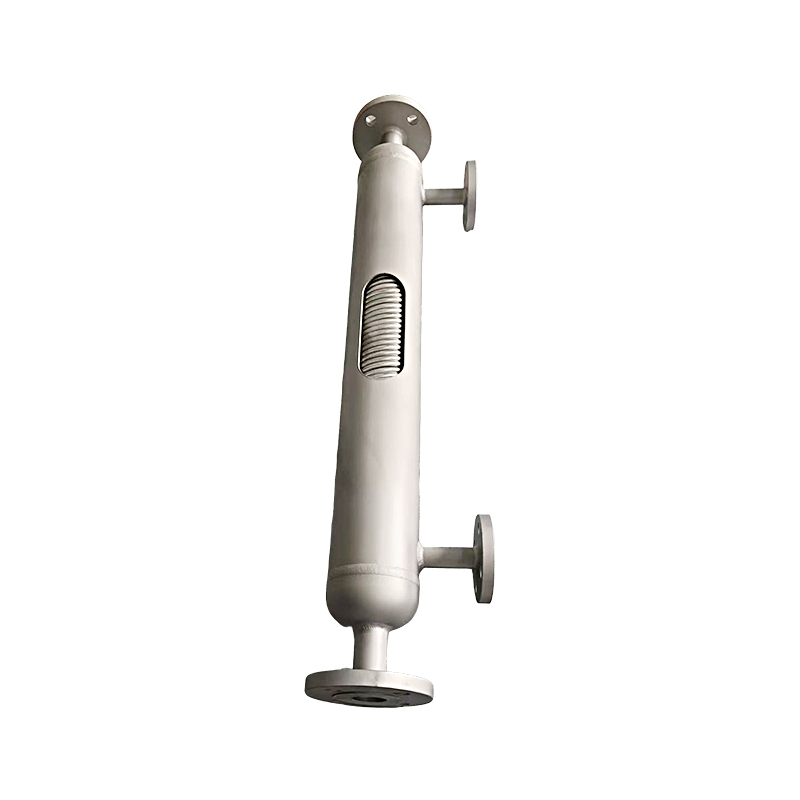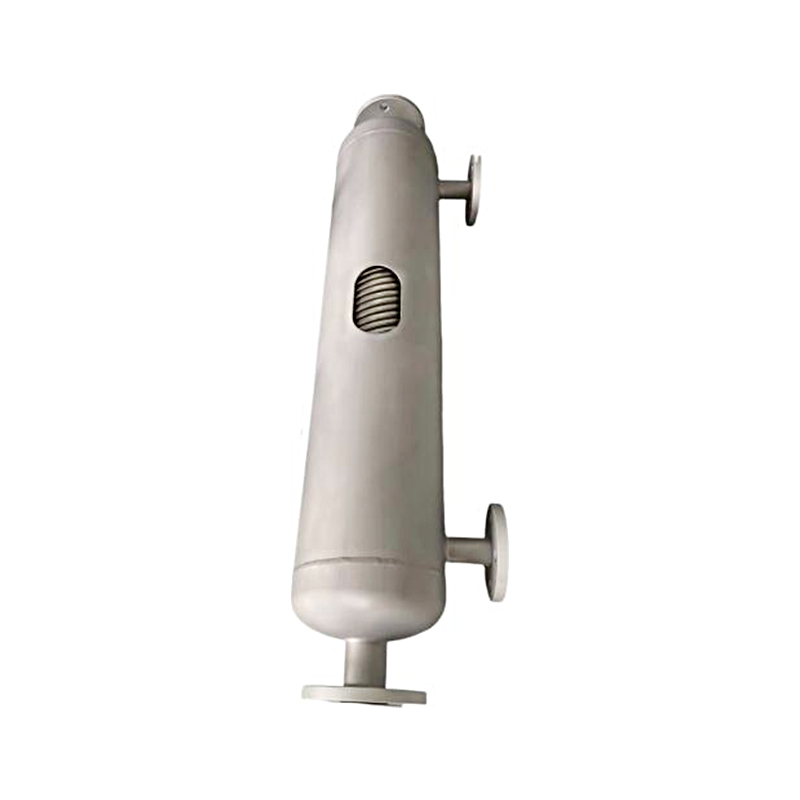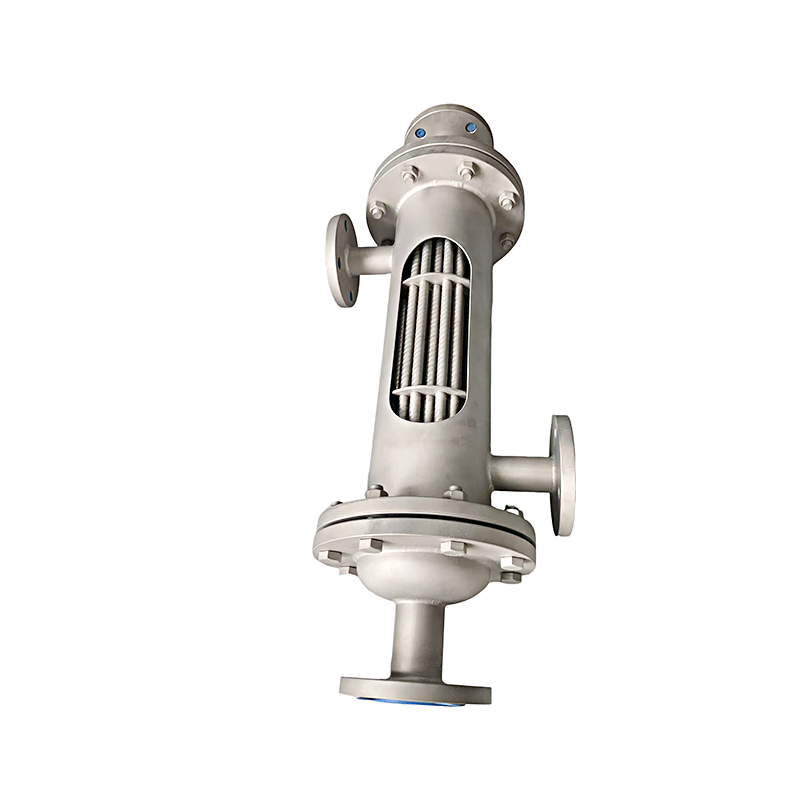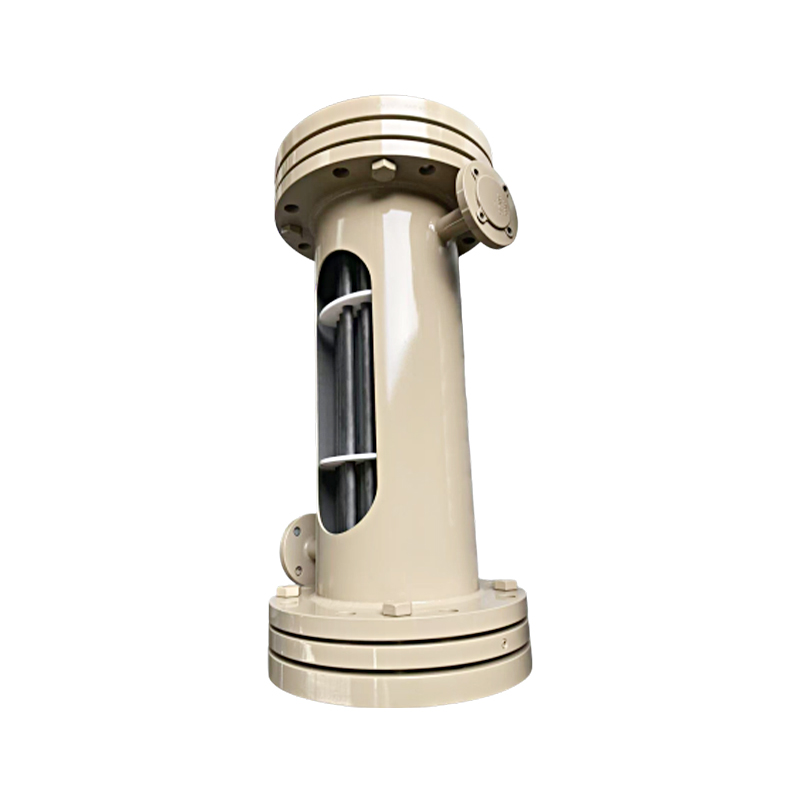How do spirally wound elastic tube bundles in cyclone collectors improve heat transfer efficiency?
Release Time : 2025-08-12
As highly efficient gas-solid separation equipment, cyclone collectors are widely used in industrial dust removal, flue gas purification, and particulate matter recovery. However, in high-temperature flue gas treatment, heat recovery and utilization are equally crucial. In recent years, with the advancement of energy-saving technologies, many cyclone collectors have begun integrating heat transfer functions. One of the most representative innovations is the spirally wound elastic tube bundle structure. This unique design not only enhances the dust removal performance of the equipment but also significantly improves its heat transfer efficiency.
1. Optimizing the Fluid Flow Path and Enhancing Turbulence
Traditional heat exchangers typically use straight or U-shaped tube structures. Fluid flow within the tubes tends to form laminar flow, resulting in a thick heat transfer boundary layer and limited heat transfer efficiency. However, spirally wound elastic tube bundles, by tightly wrapping the heat transfer tubes around a central axis or the inner wall of the shell, induce a strong rotational motion in the fluid as it passes through. This spiral flow significantly increases fluid turbulence, destabilizes the boundary layer, and thus significantly improves the convective heat transfer coefficient. In a cyclone collector, hot, dusty gas enters tangentially, already possessing strong rotational kinetic energy. The spirally wound tube bundle, perfectly aligned with the airflow direction, further enhances the airflow's rotation, ensuring more contact between the hot gas and the tube wall and faster heat transfer. This "co-directional, coordinated" flow design maximizes the utilization of the original airflow energy and improves overall heat transfer efficiency.
2. Increased Effective Heat Transfer Area
The spirally wound structure allows for the arrangement of longer heat transfer tubes within a limited space, significantly increasing the heat transfer area per unit volume. Compared to traditional straight tube arrangements, spiral winding achieves a higher tube bundle density, allowing more heat to be absorbed in a shorter period of time. Furthermore, the flexible tube bundle design allows for minimal deformation during thermal expansion and contraction, preventing fatigue damage caused by stress concentration, thereby ensuring structural integrity and heat transfer stability during long-term operation. Furthermore, the spiral arrangement evenly distributes the gaps between the tube bundles, reducing dead zones and vortex areas. This ensures uniform airflow throughout the heat transfer area, preventing localized overheating or insufficient heat transfer, further improving heat transfer uniformity and overall efficiency.
3. Enhanced Bidirectional Heat Transfer Between the Tubes and the Inside
The spirally wound elastic tube bundle not only optimizes heat transfer between the high-temperature gas outside the tubes and the tube wall, but also achieves efficient internal cooling through the optimal flow design of the medium within the tubes (such as water or thermal oil). Due to the spiral shape of the tube bundle, the fluid within the tubes also generates secondary flow, enhancing internal turbulence and improving the convective heat transfer coefficient within the tubes. This "internal and external synergistic enhancement" heat transfer mechanism rapidly transfers heat from the high-temperature gas to the cooling medium, achieving efficient energy recovery.
4. Self-cleaning and Anti-Dust Properties Reduce Thermal Resistance
In actual operation, dust accumulation is a significant factor affecting heat transfer efficiency. Dust accumulation forms an insulating layer, significantly reducing heat transfer performance. However, the spirally wound elastic tube bundle generates slight elastic vibrations in response to the high-temperature airflow. This "self-excited oscillation" effect helps loosen dust particles adhering to the tube wall, allowing them to be carried away by the cyclonic separation action of the airflow, thereby keeping the tube wall clean and reducing thermal resistance. Furthermore, the spiral structure itself provides a certain flow-guiding effect, directing dust toward the vessel walls and into the hopper, preventing accumulation in the heat exchange area. This integrated "dust removal + heat exchange" design enables the cyclone collector to maintain efficient heat exchange performance while simultaneously separating particulate matter.
5. Compact Structure and Low Heat Loss
The spirally wound elastic tube bundle structure is highly integrated, resulting in a compact device with low heat capacity, rapid startup temperature rise, and easy insulation of the outer shell, reducing heat loss to the environment. Compared to decentralized heat exchange systems, the heat exchange device integrated into the cyclone collector has a short heat conduction path and minimizes energy loss, further improving the overall thermal efficiency of the system.
In summary, the spirally wound elastic tube bundle in the cyclone collector significantly improves heat exchange efficiency through multiple mechanisms, including enhanced turbulence, increased heat exchange area, optimized flow channel design, efficient bidirectional heat transfer, self-cleaning capabilities, and reduced heat loss. It not only achieves integrated dust removal and waste heat recovery, but also provides an innovative solution for industrial energy conservation and consumption reduction.
1. Optimizing the Fluid Flow Path and Enhancing Turbulence
Traditional heat exchangers typically use straight or U-shaped tube structures. Fluid flow within the tubes tends to form laminar flow, resulting in a thick heat transfer boundary layer and limited heat transfer efficiency. However, spirally wound elastic tube bundles, by tightly wrapping the heat transfer tubes around a central axis or the inner wall of the shell, induce a strong rotational motion in the fluid as it passes through. This spiral flow significantly increases fluid turbulence, destabilizes the boundary layer, and thus significantly improves the convective heat transfer coefficient. In a cyclone collector, hot, dusty gas enters tangentially, already possessing strong rotational kinetic energy. The spirally wound tube bundle, perfectly aligned with the airflow direction, further enhances the airflow's rotation, ensuring more contact between the hot gas and the tube wall and faster heat transfer. This "co-directional, coordinated" flow design maximizes the utilization of the original airflow energy and improves overall heat transfer efficiency.
2. Increased Effective Heat Transfer Area
The spirally wound structure allows for the arrangement of longer heat transfer tubes within a limited space, significantly increasing the heat transfer area per unit volume. Compared to traditional straight tube arrangements, spiral winding achieves a higher tube bundle density, allowing more heat to be absorbed in a shorter period of time. Furthermore, the flexible tube bundle design allows for minimal deformation during thermal expansion and contraction, preventing fatigue damage caused by stress concentration, thereby ensuring structural integrity and heat transfer stability during long-term operation. Furthermore, the spiral arrangement evenly distributes the gaps between the tube bundles, reducing dead zones and vortex areas. This ensures uniform airflow throughout the heat transfer area, preventing localized overheating or insufficient heat transfer, further improving heat transfer uniformity and overall efficiency.
3. Enhanced Bidirectional Heat Transfer Between the Tubes and the Inside
The spirally wound elastic tube bundle not only optimizes heat transfer between the high-temperature gas outside the tubes and the tube wall, but also achieves efficient internal cooling through the optimal flow design of the medium within the tubes (such as water or thermal oil). Due to the spiral shape of the tube bundle, the fluid within the tubes also generates secondary flow, enhancing internal turbulence and improving the convective heat transfer coefficient within the tubes. This "internal and external synergistic enhancement" heat transfer mechanism rapidly transfers heat from the high-temperature gas to the cooling medium, achieving efficient energy recovery.
4. Self-cleaning and Anti-Dust Properties Reduce Thermal Resistance
In actual operation, dust accumulation is a significant factor affecting heat transfer efficiency. Dust accumulation forms an insulating layer, significantly reducing heat transfer performance. However, the spirally wound elastic tube bundle generates slight elastic vibrations in response to the high-temperature airflow. This "self-excited oscillation" effect helps loosen dust particles adhering to the tube wall, allowing them to be carried away by the cyclonic separation action of the airflow, thereby keeping the tube wall clean and reducing thermal resistance. Furthermore, the spiral structure itself provides a certain flow-guiding effect, directing dust toward the vessel walls and into the hopper, preventing accumulation in the heat exchange area. This integrated "dust removal + heat exchange" design enables the cyclone collector to maintain efficient heat exchange performance while simultaneously separating particulate matter.
5. Compact Structure and Low Heat Loss
The spirally wound elastic tube bundle structure is highly integrated, resulting in a compact device with low heat capacity, rapid startup temperature rise, and easy insulation of the outer shell, reducing heat loss to the environment. Compared to decentralized heat exchange systems, the heat exchange device integrated into the cyclone collector has a short heat conduction path and minimizes energy loss, further improving the overall thermal efficiency of the system.
In summary, the spirally wound elastic tube bundle in the cyclone collector significantly improves heat exchange efficiency through multiple mechanisms, including enhanced turbulence, increased heat exchange area, optimized flow channel design, efficient bidirectional heat transfer, self-cleaning capabilities, and reduced heat loss. It not only achieves integrated dust removal and waste heat recovery, but also provides an innovative solution for industrial energy conservation and consumption reduction.








